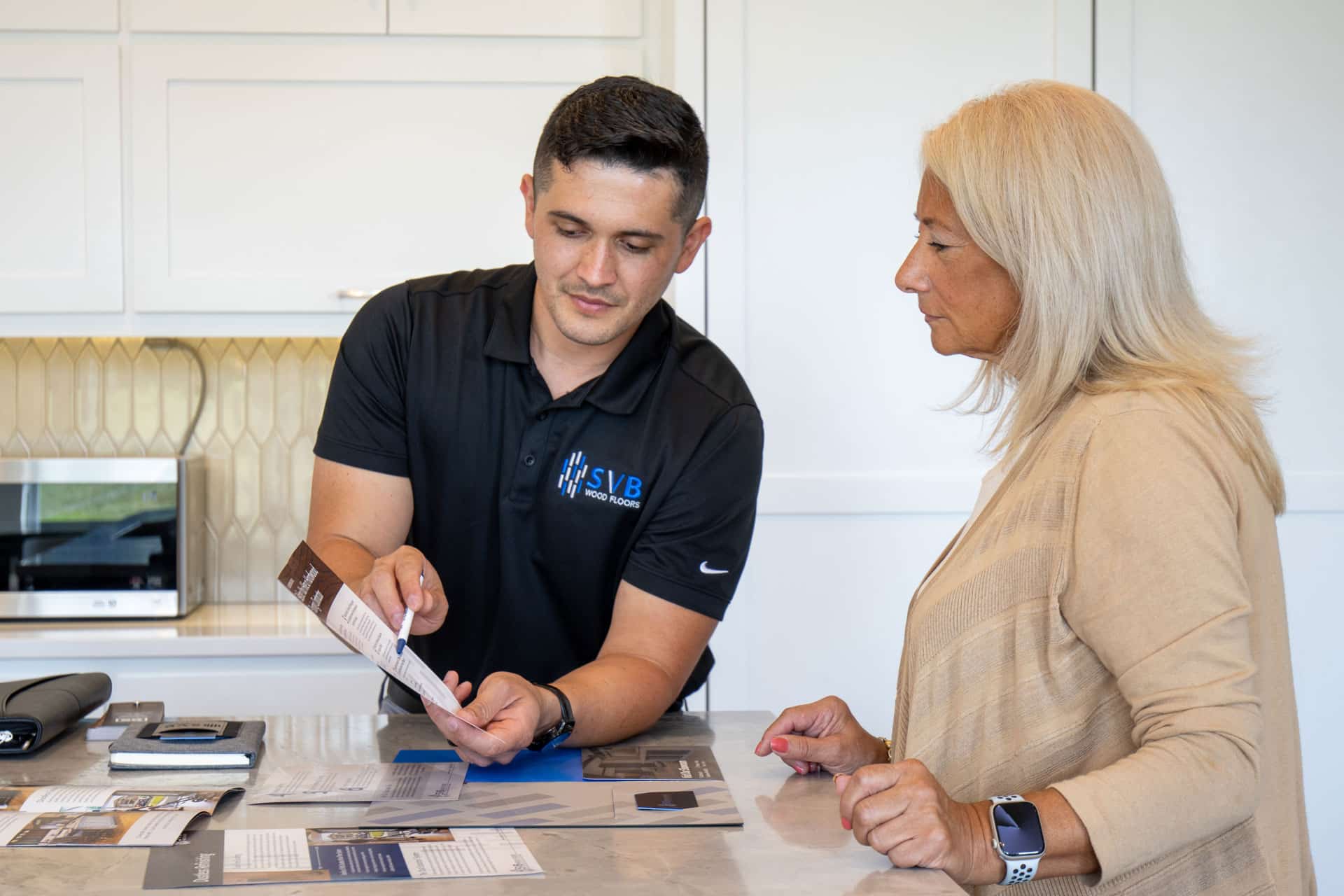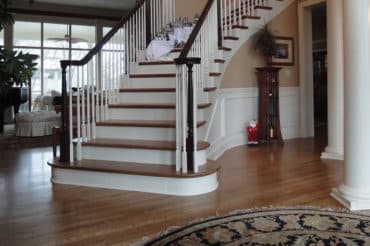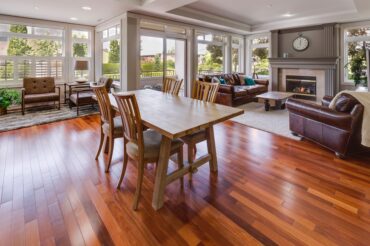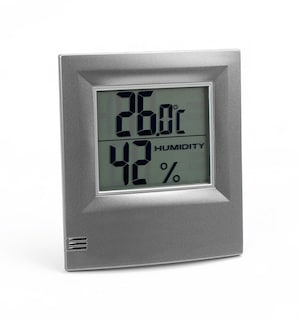
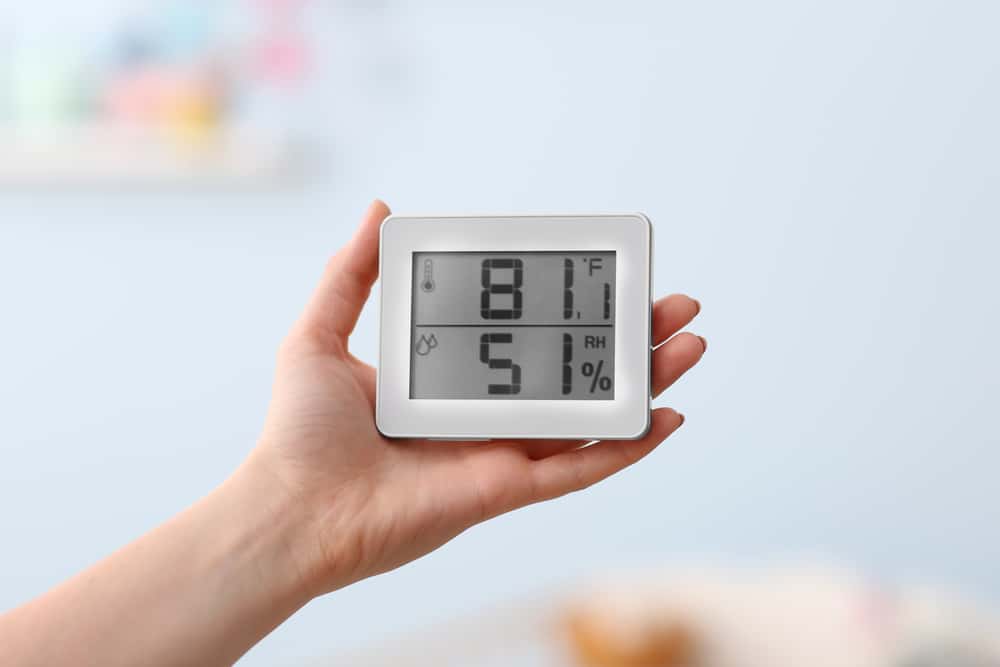 We all know that water pooling on your hardwood floors is a bad combination. But did you know that the humidity level, whether too high or low, in your home can also affect your wood floors?
We all know that water pooling on your hardwood floors is a bad combination. But did you know that the humidity level, whether too high or low, in your home can also affect your wood floors?
The wood floor experts at SVB Wood Floors have a few tips about how to control the humidity in your home in order to maintain your beautiful wood floors.
Why Is Humidity Bad for Wood Floors?
Because wood is a porous material, it soaks up moisture which can damage it. Depending on how much moisture, and how long the hardwood floor is exposed to it, it can do irreparable damage.
The humidity levels in your home are extremely important for maintaining your wood floors because moisture loss causes wood to shrink and moisture absorption causes wood to swell. Here are some warning signs that suggest you may need some help with humidity.
Symptoms of Wood Floor Winter Humidity
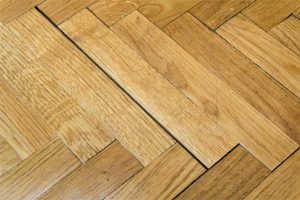
In the wintertime, the most common symptom you see in hardwood floors is gapping between the planks.
What happens is that, when we turn our furnaces on, the humidity level inside our homes plummets.
This causes the wood to shrink. Hardwood floors do not shrink consistently in all directions. When humidity levels decrease, the boards will shrink more from side to side than end to end.
Thus, the distance between the planks grows larger causing gaps. This also means that wider boards will shrink more than narrower boards.
Related Read: How to Keep Winter Weather From Destroying Your Hardwood Floors
Symptoms of Wood Floor Summer Humidity
Excess humidity in the summer can cause the wood planks to expand and press against each other. This increase in pressure can cause the boards to cup or become higher on the edges than in the center.
Just as in low humidity cases, the boards swell more from side to side than end to end. In extreme cases, the pressure can cause the boards to crack.
Related Read: 8 Ways You’re Destroying Your Hardwood Floors
What Should My Humidity Levels Be in my Home?
So what’s a safe humidity range for your wood floors? Most experts agree that an ideal level of indoor humidity is around 45%, although anything between 35% and 55% is acceptable.
The relative humidity of indoor air during heating season can be as low as 10%-15%. To put that into context, consider that the average relative humidity in the Sahara Desert is 25%!
Think about that. Your home can be drier than the desert during the cold winter months! That’s not good for you and it’s definitely not good for your wood floors!
Humidifiers to the Rescue
It’s obvious that you need to add humidity to the air, and then control it to maintain an optimal level. Here are a few humidifier tips to help you do just that:
Get a Hygrometer
This device measures relative humidity, so that you can easily monitor humidity levels in your home. You can get one at your local hardware store.
Have a Humidifier Installed on Your HVAC System.
A humidistat that’s built into the unit will let you set humidity levels rather than leave it to chance. This is an ideal solution because it allows you to control humidity levels year-round so you can avoid damaging your wood floors with humidity levels that are too high in the summer.
Portable Humidifiers
Portable humidifiers aren’t as convenient as a whole-house system that’s integrated into your HVAC system, but they’re better than nothing. You’ll have to clean the moisture that may gather around them and refill them every few days and most manufacturers recommend using distilled water rather than tap water, which can cause mineral deposits that affect their efficiency.

